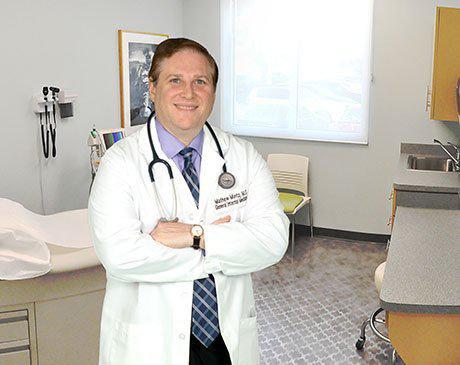

There are so many wonderful things about DPC: high patient and provider satisfaction, improved quality of care; heck, even some of the EMR’s used for DPC are pleasant. Another wonderful thing about running your own DPC is that you can choose exactly how you want to run your business, including setting your own fees, determining your own hours, and how to best spend on overhead. Along those lines, many DPC’s have been very clever regarding adding revenue streams beyond their monthly membership. While many DPC’s do this by offering value added primary care services for their members such as low-cost in-house labs or imaging, low cost procedures, and discounted in-house dispensed medications; some DPC practices have added services that are not generally considered primary care and/or intended for both member and non-member patients, which I will call “non-DPC services” for lack of a more creative name (I am sure DF could come up with something better).
There are a wide variety of non-DPC services practices can offer including coaching/obesity medicine, aesthetics, DOT physicals, IV hydration, chiropractic manipulation, acupuncture, regenerative medicine, and even medical cannabis certifications (more on these services in Part 2).
Non-DPC services are an excellent fit for DPC practices for a variety of reasons. Most of these services are not usually covered by insurance, and since DPC practices operate outside of insurance restrictions, they can be an ideal pairing. In addition, many of these services require additional space, staff, and time. These luxuries are much more readily available in a DPC practice than a crowded insurance-based practice, especially for new practices building their panels. (I started one of my non-DPC services because I had an extra exam room that I was not able to sublet).
There are a number of reasons that DPC practices should consider adding non-DPC services to their practices:
Alternative to External Revenue Sources– A common concern for new or early DPC practices is how to maintain revenue and income while building your panel. A common option is moonlighting or working at another location (current job, urgent care) until the practice grows. The problem with generating revenue from these external sources is that it takes away time and effort from building your DPC practice. Keeping revenues internally allows you to focus on your DPC practice exclusively.
Alternative to Hybrid – Another option new or early DPC practices will choose to solve early cash-flow issues is starting a hybrid practice, i.e., seeing fee for service Medicare patients, while offering DPC for all others. While this option keeps revenues internally, working with any insurance can take away many of the benefits of true DPC, and can lead to some tricky legal issues.
Opportunity to Convert Non-Members-One of the biggest barriers to DPC is growth is for insured patients not understanding the value of DPC on top of their high insurance premiums. However, this barrier is eliminated with non-DPC services, as most services are not covered by insurance. Once these patients are “in the door”, it is an opportunity to sell them on your DPC practice. Offering DPC members discounted pricing on non-DPC services is another way to sweeting the deal.
Further Limit Panel Size– DPC math is pretty easy. Salary equals revenue minus overhead, and revenue equals panel size times annual membership fee. Thus, assuming the usually small overhead of most DPC practices, the only way to increase salary for a DPC only practice is to increase your panel size or increase your membership fee. The additional revenue streams of non-DPC services can allow practices to keep panel sizes and/or membership fees at ideal numbers while maintaining a desired salary or life-style.
Opportunity to Build Your Brand– Branding is important to any business including DPC. Some non-DPC services work well with areas that can help with the branding of an entire practice including alternative/holistic medicine and general health and wellness. For example, Dr. Ben Hagopian at Maine Integrative Family Care uses non-DPC integrative services to help build the brand of his entire practice. DO’s trained in osteopathic manipulation are an easy fit for this.
Variety and Intellectual Stimulation– Variety is the spice of life. Many of us went into primary care because we loved the variety. Adding a non-DPC service allows primary care physicians to be specialists in one or more areas. Medical education does not stop at residency, and there are many training opportunities available for those interested in adding non-DPC services to their practices. You do not have to be a plastic surgeon or dermatologist to add aesthetics to your practice (though I will discuss the potential perils of this in Part 3).
(This is part 1 of a 3-part series regarding adding non-DPC services to DPC practices).
Dr. Matthew Mintz is an Internal Medicine and Primary Care physician, whose concierge-style DPC offers non-DPC services including Spravato (nasal esketamine), medical cannabis, and TruSculpt3D. Dr. Mintz’ website is www.drmintz.com and medical cannabis site (different for legal reasons) is www.mdcannabisdoc.com.
[…] non-DPC services as part of my DPC practice (I have a 3 part series on this on Doug Farrago’s DPC News site). I very much enjoy having these services as part of my practice, which I probably would have […]